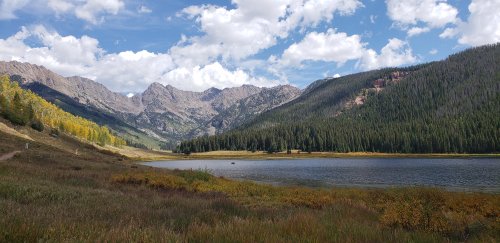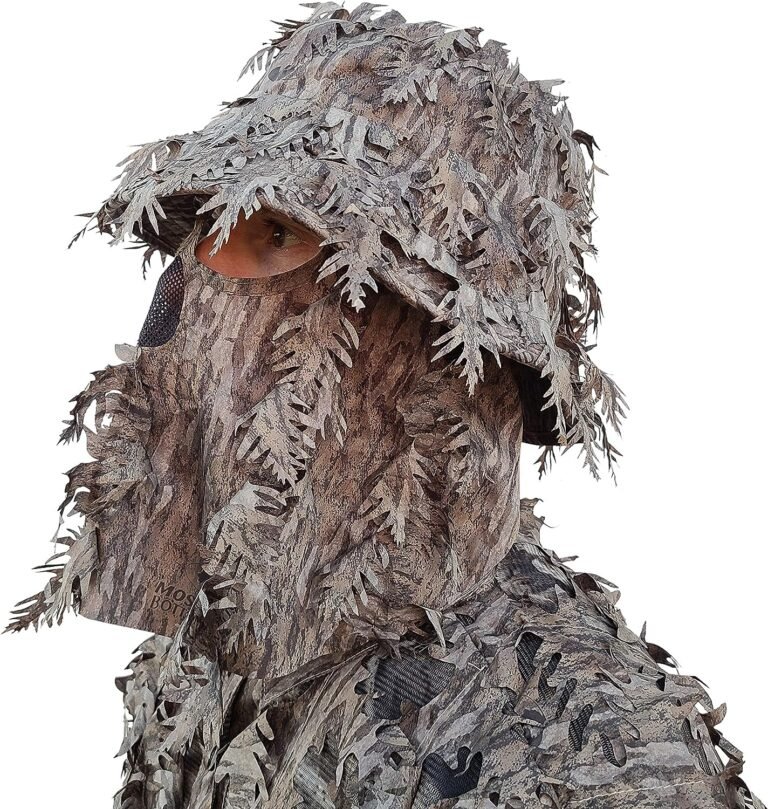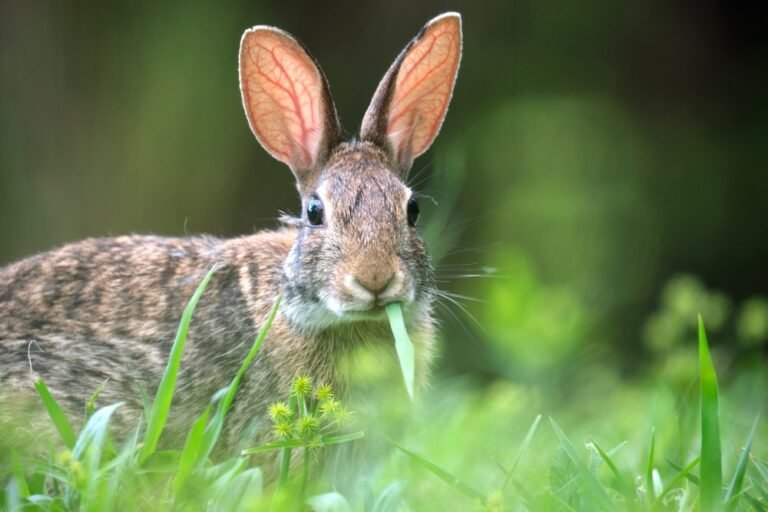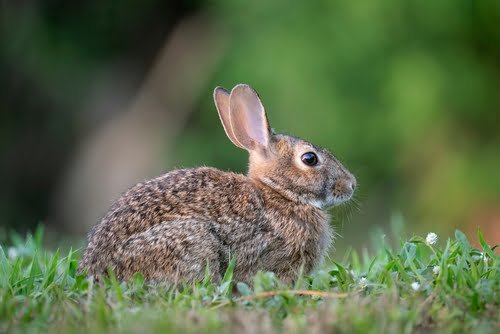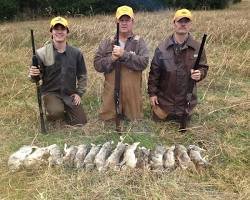Conquering Winter with the Ultimate Snowshoeing Fitness Now
Winter exploration offers a unique opportunity to immerse oneself in the beauty of nature. One of the best ways to do this is through snowshoeing.
As you embark on your snowshoeing adventure, you’ll discover that it’s not just a means of traversing snowy terrain; it’s an exceptional way to connect with Wildlife and experience the great outdoors like never before. When you strap on your snowshoes and venture into the wilderness, be prepared to encounter various forms of Wildlife.
From woodland creatures like deer and squirrels to majestic birds soaring overhead, there’s no shortage of animal encounters awaiting you. As you quietly make your way along nature trails, watch for snow tracks indicating recent wildlife activity.
Who knows? You might stumble upon wolf tracks or witness playful otters sliding across frozen ponds.
Remember, though, that responsible wildlife observation is essential when snowshoeing in an eco-friendly manner. Respect animals’ space by observing from a distance and refraining from any actions that might disturb their natural behavior.
Keep noise levels low and avoid sudden movements that could scare them away. By following these guidelines, you’ll have a chance to witness fascinating interactions among animals without causing any harm.
Now let’s talk about another incredible aspect of snowshoeing: outdoor photography! With the serene winter landscapes as your backdrop and abundant Wildlife as potential subjects, there are countless opportunities for capturing breathtaking shots.
As you traipse through snowy meadows or hike up frozen hillsides, keep your camera handy for those unexpected moments when nature presents itself in all its glory. To make the most of your outdoor photography experience while respecting nature’s harmony, be mindful of where you step while framing your shots.
Avoid trampling delicate vegetation or disturbing animal habitats just for the perfect angle; remember that preserving our ecosystems takes precedence over getting an award-winning shot. Snowshoeing in the wild is an extraordinary way to explore winter while connecting with Wildlife and immersing oneself in nature.
By approaching wildlife observation responsibly and capturing the beauty through eco-friendly outdoor photography, you can fully appreciate winter’s wonders. So, strap on those snowshoes, grab your camera, and embark on a thrilling adventure into the snowy wilderness!
Top Destinations for Winter Wildlife Watching
When it comes to snowshoeing, one of the most exciting aspects is the opportunity to immerse yourself in nature and observe Wildlife in its natural habitat. If you’re an outdoor enthusiast and a nature lover, you’ll understand the thrill of encountering Wildlife while trekking through snow-covered landscapes. In this section, we’ll explore some of the top destinations for winter wildlife watching that are perfect for snowshoers seeking an unforgettable experience.
One incredible destination for winter wildlife watching is Yellowstone National Park in Wyoming, USA. This iconic park is home to an abundance of diverse wildlife species, including majestic elk, elusive wolves, and even grizzly bears.
Snowshoers can explore the park’s numerous trails while watching tracks in the fresh powder. The Lamar Valley is particularly renowned for its wolf-watching opportunities during winter months.
For those who prefer a more remote and rugged experience, consider venturing north to Canada’s Yukon Territory. With vast expanses of untouched wilderness, this region offers incredible opportunities to spot Wildlife, such as caribou herds migrating across frozen landscapes or the elusive lynx stealthily traversing through snowy forests.
The Yukon also boasts breathtaking views of the Northern Lights dancing across darkened skies on clear winter nights. If you’re looking for a unique winter exploration experience combined with rich biodiversity, head to Finland’s Oulanka National Park.
This park is in the Arctic Circle; this picturesque nature trail winds through snow-draped pine forests along icy rivers. Here, you might be lucky enough to spot rare arctic foxes or reindeer grazing quietly against a backdrop of snowy hills.
Another exceptional destination known for its diverse wildlife population is Banff National Park in Alberta, Canada. With its towering Rocky Mountains and pristine alpine lakes frozen under blankets of white snow, Banff provides an idyllic setting for eco-friendly hiking adventures on snowshoes.
Keep an eye out for the park’s iconic residents, including majestic bighorn sheep, playful river otters, and maybe even a glimpse of a grizzly bear lumbering through the winter landscape. These are just a few examples of the countless destinations worldwide that offer exceptional opportunities for winter wildlife watching on snowshoes.
Remember always to respect nature and Wildlife while observing from a distance. Capture these magical moments with your outdoor photography skills and leave no trace behind as you embark on your eco-friendly snowshoeing adventures in search of nature’s wonders.
Snowshoeing Gear for Nature Exploration
Regarding snowshoeing, having the right gear can make all the difference in your nature exploration. Let’s dive into some essential snowshoeing gear to enhance your winter adventures.
First and foremost, you’ll need a pair of high-quality snowshoes. Snowshoes come in various sizes and styles, so choose ones that suit your weight and the type of terrain you plan to tackle.
Consider factors like flotation, traction, and maneuverability. Look for snowshoes with crampons or metal teeth on the bottom for added grip on icy surfaces.
And don’t forget to select bindings that securely fasten your boots to the snowshoes. Next up is footwear – it’s crucial to have warm, waterproof boots designed for cold weather conditions.
Insulated hiking boots or winter-specific footwear will keep your feet dry and cozy during long treks through snowy landscapes. Opt for boots with good ankle support and a sturdy sole for stability on uneven terrain.
Layering is key when dressing for outdoor activities in winter. Start with a moisture-wicking base layer that helps regulate body temperature by keeping sweat away from your skin.
A mid-layer made of lightweight, insulating material such as fleece or down provides warmth while allowing breathability. Invest in a waterproof and wind-resistant outer shell jacket to protect against the elements.
Don’t forget about accessories! A good good will keep your feet warm and dry throughout your adventure.
Insulated gloves or mittens protect your hands from freezing temperatures while allowing dexterity for operating cameras or binoculars. A hat or beanie that covers your ears is another must-have item to prevent heat loss from exposed areas.
To enjoy nature’s beauty during winter exploration, consider bringing additional gear tailored to specific interests, such as wildlife observation or outdoor photography. Binoculars can help you spot distant creatures up close, while a camera with a telephoto lens will allow you to capture stunning wildlife shots.
A small backpack with compartments will provide convenience and storage for essentials like water, snacks, and extra layers. Equipped with the right gear, you’ll be ready to embark on exciting snowshoeing adventures to explore nature’s wintry wonders.
Remember to choose eco-friendly options whenever possible and leave no trace on your journeys through pristine wildernesses. Happy snowshoeing!
Observing Wildlife Responsibly on Snowshoes
Observing Wildlife
Responsibly on Snowshoes When venturing into the winter wonderland on your snowshoes, it’s important to remember that you are stepping into the natural habitat of various wildlife species. Here are a few tips for a responsible snowshoeing or wildlife observation experience that is enjoyable and respectful.
Firstly, always be mindful of your surroundings. Stay on designated nature trails or established paths to avoid disturbing animal habitats. These trails are carefully crafted to minimize human impact while maximizing opportunities to encounter Wildlife. So, stick to them as much as possible and avoid wandering off into undesignated areas.
As you trek through the snow-covered landscapes, keep noise levels at a minimum. Animals have a keen sense of hearing and can be easily startled by loud noises.
Try not to talk loudly or make abrupt movements that might disturb their peaceful winter slumber. By being gentle in your movements and maintaining a quiet demeanor, you increase your chances of observing animals in their natural behavior.
Another crucial aspect of responsible wildlife observation is maintaining a safe distance from the animals. While it may be tempting to get up close for that perfect outdoor photography shot, it is imperative to respect the boundaries set by nature.
Keep at least 100 feet away from any wildlife you encounter – this distance ensures both their safety and yours. Furthermore, do not attempt to feed or touch any wild animals during your snowshoeing adventure.
It disrupts their natural feeding patterns and can create dependency on human interaction for survival. Remember that eco-friendly hiking involves preserving the balance of nature’s ecosystems and respecting each creature’s role
By following these guidelines for observing wildlife responsibly on snowshoes, you not only contribute to eco-consciousness and winter exploration experience by immersing yourself in nature’s beauty without causing harm or distress to its inhabitants. So lace up those snowshoes, embark on an adventure with reverence for all creatures, and let the wonders of the winter wilderness unfold.
Capturing Winter’s Beauty: Photography Tips
Snowshoeing provides a fantastic opportunity to immerse yourself in the breathtaking beauty of winter landscapes. And what better way to capture those stunning moments than through the lens of your camera?
In this section, we’ll share some photography tips to help you preserve the magic of winter while snowshoeing. First and foremost, it’s important to dress appropriately for outdoor photography in winter conditions.
Ensure you have warm, waterproof clothing and gloves for easy camera handling. Consider using a padded camera bag or backpack with extra insulation to protect your gear from the cold.
When it comes to shooting on snowy trails, lighting plays a crucial role. The soft sunlight during early morning or late afternoon is ideal for capturing the serene ambiance of winter.
This time of day, often referred to as the “golden hour,” offers warm tones and long shadows that enhance the beauty of nature. To create experiments with different angles and compositions, depth and variety in and experiment with different angles and compositions.
Capture close-up shots of intricate snowflakes or frost-covered branches. Look for leading lines on trails that draw the viewer’s eye deeper into the frame, such as winding paths or footprints disappearing into the distance.
Wildlife is often more active during winter, so there are opportunities to photograph animals while snowshoeing. To approach Wildlife without disturbing their natural behavior, use a telephoto lens or zoom function on your camera.
This way you can maintain a safe distance while obtaining detailed shots of birds perched in trees or deer grazing in snow-covered meadows. Remember that part of being eco-friendly means leaving no trace behind.
When photographing nature during your snowshoe adventures, be mindful not to disturb plants or Wildlife habitats. Stay on designated trails whenever possible and avoid trampling delicate vegetation underfoot.
With these photography tips in mind, you’ll be well-prepared to capture unforgettable moments during your snowshoeing escapades. So grab your camera, lace up your snowshoes, and embark on a winter exploration that combines outdoor photography’s joys with nature’s wonders.
Preparing for a Wildlife Snowshoeing Adventure
When embarking on a snowshoeing adventure in search of Wildlife, proper preparation is key to ensuring a successful and enjoyable experience.
Here are a few essential tips to consider before setting out into the winter wonderland:
First and foremost, familiarize yourself with the area you plan to explore. Research local nature trails and wildlife hotspots, as well as any regulations or permits that may be required.
This will help you choose the best location for your eco-friendly hiking adventure, increasing your chances of encountering various species in their natural habitat. Next, dress appropriately for the cold weather conditions.
Layering is essential to adapt to temperature fluctuations during your snowshoe trek. Start with a moisture-wicking base layer to keep you dry and warm, followed by insulating layers such as fleece or down jackets.
Don’t forget waterproof pants and sturdy boots that provide good traction on snowy terrain. It’s also crucial to pack essential gear for your wildlife observation journey.
Bring along binoculars or a spotting scope to get up close and personal with distant creatures without disturbing them. Consider carrying a field guide or smartphone app that can help you identify different animal species and their behaviors.
Furthermore, don’t forget about safety precautions during winter exploration. Carry basic survival tools like extra food, water, navigation aids (such as maps or GPS), and first aid supplies in case of emergencies.
Inform someone about your planned itinerary before heading out into nature’s realm. Respect the Wildlife you encounter by observing from afar without causing disturbance.
Keep noise levels at a minimum so as not to scare away animals who may be nearby but hiding from sight. Remember that wildlife observation is about appreciating their natural behaviors without interrupting them.
Following these guidelines, while preparing for your wildlife snowshoeing adventure will maximize your chances of encountering fascinating creatures in their winter habitats while minimizing any negative impact on nature. So bundle up, strap on your snowshoes, and embark on an unforgettable journey into the snowy wilderness!
Tips for Quiet and Mindful Trekking
When it comes to snowshoeing, quiet and mindful trekking is not just about being a considerate hiker but also enhances your overall experience in nature. By following a few tips for quiet and mindful trekking, you can fully immerse yourself in the serenity of the winter landscape while minimizing your impact on the environment. First and foremost, choose your gear wisely.
Opt for snowshoes with quieter bindings to minimize any clanking noises as you walk. Look for models that have rubberized or padded straps rather than metal buckles that may rattle and disturb the peace of the wilderness.
Additionally, make sure your poles have rubber tips to minimize noise when they come into contact with rocks or hard surfaces. Next, take slow and deliberate steps to reduce any unnecessary noise caused by rushing through the snow.
Allow yourself to become attuned to the rhythm of your own breath and footsteps as you traverse the winter wonderland. This not only helps maintain a sense of tranquility but also allows you to be more observant of any wildlife that may be nearby.
In addition to being aware of our movements, respecting wildlife habitats while snowshoeing is crucial. Avoid venturing too close to animal dens or nesting areas, especially during mating or birthing seasons when disturbances can have serious consequences for their survival.
Keep an eye out for signs warning about sensitive areas or restricted access points and always adhere to them. Try incorporating mindfulness practices into your winter exploration.
Take frequent breaks along nature trails to fully absorb the beauty around you – listen intently as birds chirp in the distance or feel the crispness of fresh snow beneath your boots. Engaging all your senses will create lasting memories while fostering a deeper connection with nature.
By practicing quiet and mindful trekking techniques while snowshoeing, we can enjoy eco-friendly hiking experiences that prioritize both our enjoyment and respect for wildlife habitats.
So, the next time you lace up your snowshoes, embrace the stillness of nature and embark on a winter adventure that leaves only footprints and preserves the tranquility for generations to come.
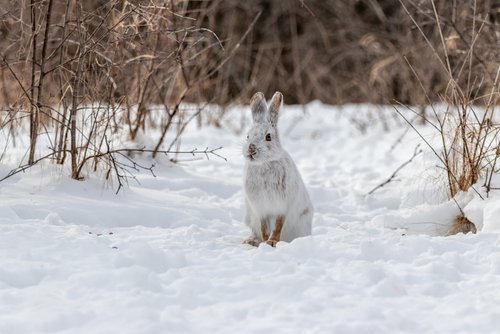
Identifying Animal Tracks and Signs in the Snow
Being out in nature during winter offers a unique opportunity to observe wildlife in its natural habitat. One of the most exciting aspects of snowshoeing is being able to identify animal tracks and signs in the snow. These clues left behind by various creatures can reveal a lot about their presence and behavior, adding an extra layer of excitement to your winter exploration.
When you’re out on the trails, keep an eye out for animal tracks that stand out against the pristine white canvas. The most common tracks you’ll encounter are those of rabbits, squirrels, and deer.
Rabbit tracks usually appear as two parallel sets of small prints with a hopping pattern, while squirrel tracks resemble tiny handprints with claw marks. Deer tracks are larger and shaped like upside-down hearts, with pointed tips indicating movement direction.
If you’re lucky to come across more elusive animals like foxes or coyotes, their distinctive paw prints can be fascinating. Fox tracks often look similar to dog prints but are more slender and have a neat arrangement due to their cautious nature.
Coyote prints are slightly larger than dog prints but have a more elongated oval shape. In addition to footprints, keep an eye out for other signs of wildlife activity.
Look for bite marks on tree bark left by hungry rodents or scratch marks on tree trunks made by bears marking their territory. Keep an ear open for bird calls or rustling in the underbrush that could indicate hidden creatures nearby.
Take your winter exploration one step further by capturing these moments through outdoor photography. Bring along your camera and capture close-up shots of animal tracks or use wide-angle lenses to capture the vastness of untouched snowy landscapes surrounding them.
Always observe Wildlife from a safe distance without disturbing or damaging their habitats. Enjoy this eco-friendly way of hiking while also respecting nature’s delicate balance.
Best Practices for Eco-Conscious Snowshoeing
Best Practices for Eco-Conscious Snowshoeing When venturing into nature on your snowshoeing adventures, adopting eco-friendly practices to minimize your impact on the environment is essential. By following these best practices, not only will you ensure the preservation of our precious natural spaces, but you’ll also enhance your overall snowshoeing experience.
First and foremost, stick to designated nature trails whenever possible. These trails are carefully planned and maintained to minimize disturbance to wildlife habitats.
Avoid venturing off-trail or creating new paths as this can damage delicate ecosystems and disrupt animal habitats. Stay informed about trail closures or restrictions in protected areas to respect sensitive ecosystems during winter
Another crucial aspect of eco-conscious snowshoeing is leaving no trace behind. Pack out everything you bring, including food wrappers, water bottles, and other waste items.
Dispose of them properly when you return home or find designated waste receptacles along the trail. Remember that even seemingly harmless items like fruit peels take time to decompose fully in winter conditions.
Choose hiking gear made from sustainable materials wherever possible. to further reduce your ecological footprint during winter exploration. Choose ethically sourced snowshoes made from recycled materials if available.
Additionally, consider using reusable water bottles instead of disposable ones and bring eco-friendly snacks in reusable containers. One essential element of eco-conscious snowshoeing is practicing responsible wildlife observation.
Always maintain a safe distance from animals encountered during your treks, ensuring their safety and yours. Never attempt to feed or approach Wildlife as it can disrupt their natural behavior patterns and even pose a danger to both parties involved.
By following these best practices for eco-conscious snowshoeing, you can immerse yourself in nature’s beauty while minimizing your environmental impact. Let’s protect our wilderness areas so that future generations can enjoy the wonders they offer!
Sharing Your Experiences: Blogging and Social Media
In today’s digital age, sharing your snowshoeing experiences with the world has never been easier. Blogging and social media platforms provide the perfect outlets for showcasing your adventures, connecting with like-minded individuals, and inspiring others to embrace the beauty of winter exploration.
Whether you’re a seasoned blogger or just dipping your toes into the world of social media, here are some tips to help you share your snowshoeing experiences in an engaging and eco-friendly way.
When it comes to blogging about your snowshoeing escapades, remember that storytelling is key. Share vivid descriptions of the wildlife encounters you experienced on the trails or the breathtaking landscapes that took your breath away.
Use words that transport your readers into nature’s embrace, allowing them to feel as if they were right there with you. Don’t be afraid to get personal and share how these adventures have impacted you on a deeper level – let your passion for nature shine through.
Social media platforms such as Instagram and Facebook offer a more visual way to share your snowshoeing experiences. The key here is to capture stunning photos that truly encapsulate the magic of winter exploration.
Take advantage of natural lighting and try experimenting with different angles and perspectives to make each shot unique. Use relevant hashtags like #snowshoeingadventures or #wildlifephotography to reach a wider audience who shares similar interests.
Remember, being eco-conscious should also extend into our online presence. When sharing photos online, avoid geotagging ethe xact locations of sensitive wildlife habitats or fragile ecosystems that an influx of visitors could negatively impact.
Instead, focus on promoting responsible outdoor practices while raising awareness about conservation efforts. Engaging with fellow nature enthusiasts is another fantastic way to expand your reach and build a supportive community around shared interests.
Leave thoughtful comments on other outdoor enthusiasts’ posts, and join relevant Facebook groups or forums dedicated to snowshoeing or wildlife observation; this interaction fosters connections and allows for the exchange of tips, stories, and inspiration. Don’t forget to encourage your readers or followers to get out and experience nature firsthand.
Use your platform to educate others about the importance of respecting Wildlife and preserving our natural spaces. Share eco-friendly hiking tips, recommend sustainable gear options, or even organize local snowshoeing meetups to promote responsible outdoor practices.
By sharing your snowshoeing experiences through blogging and social media, you have the power to inspire others to connect with nature, appreciate its wonders, and join efforts in protecting our precious environment. So grab your camera, lace up those snowshoes, and let your adventures unfold while positively impacting both the digital world and the great outdoors.

Conclusion
Snowshoeing is not just a recreational activity, but also a gateway to the wonders of winter exploration and wildlife observation. It allows us to immerse ourselves in the beauty of nature while treading lightly and minimizing our impact on the environment. Whether you’re venturing into top destinations for winter wildlife watching or quietly trekking through nature trails, snowshoeing offers an eco-friendly way to experience the great outdoors.
One of the remarkable aspects of snowshoeing is its compatibility with outdoor photography. As you navigate through snowy landscapes, don’t forget to capture the breathtaking moments that unfold before your eyes.
The tranquil scenes, wildlife encounters, and delicate details of winter can be forever preserved through your lens. By capturing these images, you create lasting memories and promote a deeper appreciation for nature’s magnificence.
Remember that engaging in eco-friendly hiking practices is crucial during your snowshoeing adventures. Respecting wildlife habitats and following ethical guidelines for observing animals ensures their well-being and preserves their natural behaviors.
Understanding how to identify animal tracks and signs in the snow adds another layer of excitement to your journey as you decipher nature’s hidden stories. As we revel in the joy of snowshoeing, let us not forget our responsibility as stewards of the environment.
Adopting best practices for eco-conscious snowshoeing such as leaving no trace behind, properly disposing of waste, and respecting designated trails, will preserve these pristine landscapes for future generations. In essence, embracing snowshoeing as a means of connecting with nature allows us to witness firsthand the wonders that winter holds.
From encountering elusive Wildlife to capturing awe-inspiring photographs amidst serene surroundings, every step taken on those magnificent shoe-like contraptions is a testament to our love for adventure and environmental conservation. So grab your gear, embark on a snow-covered trail, and let nature’s embrace leave you with memories that warm your heart long after the snow has melted away.


